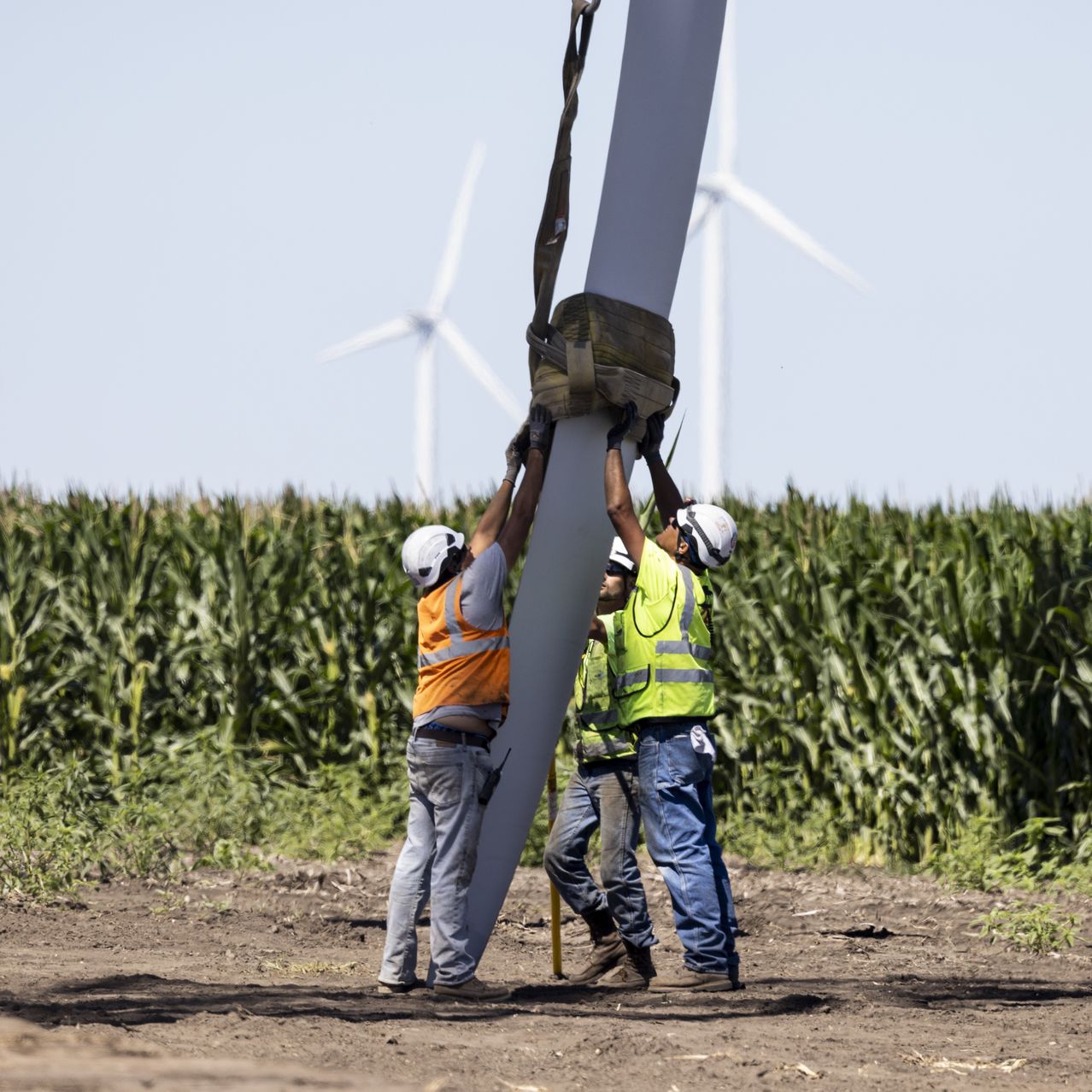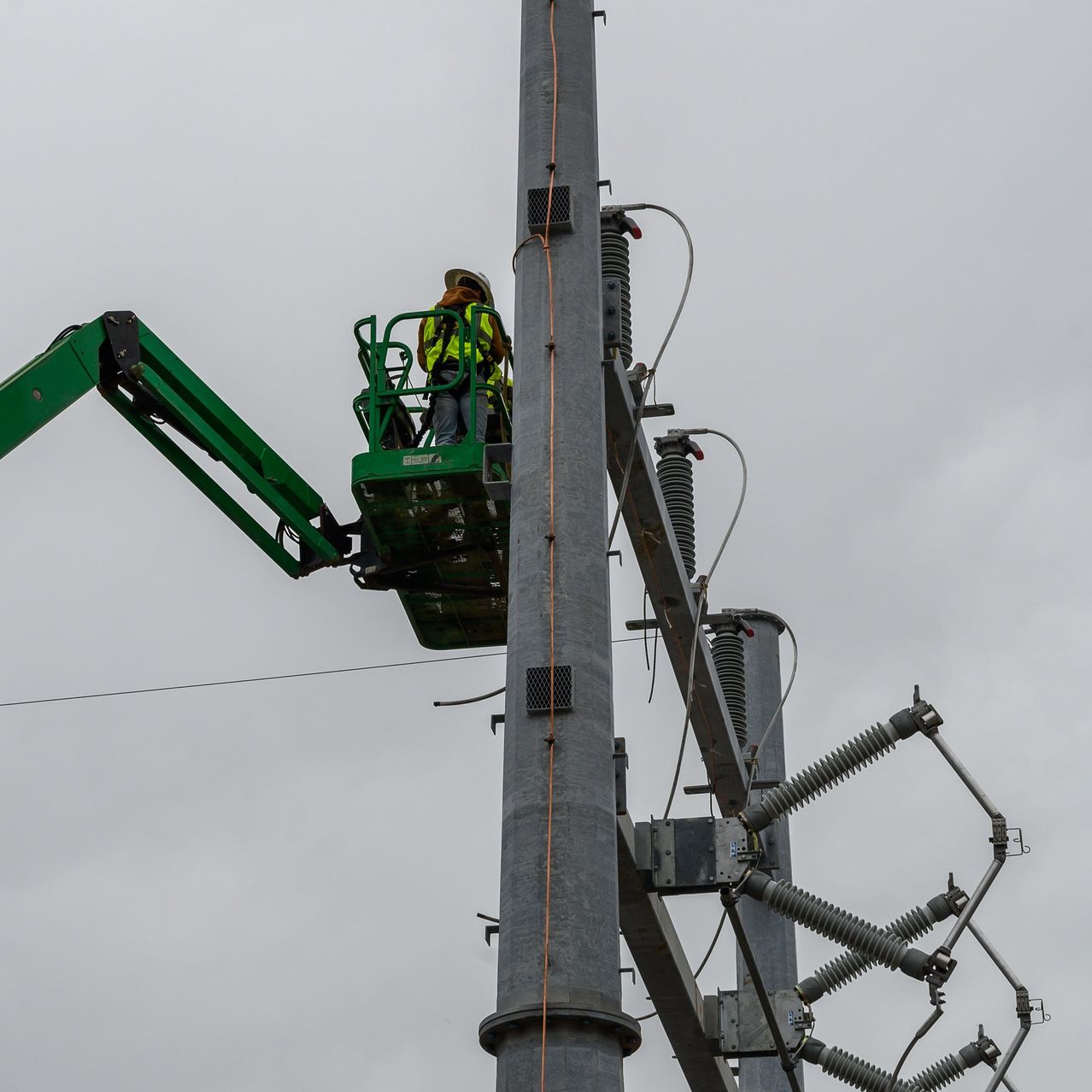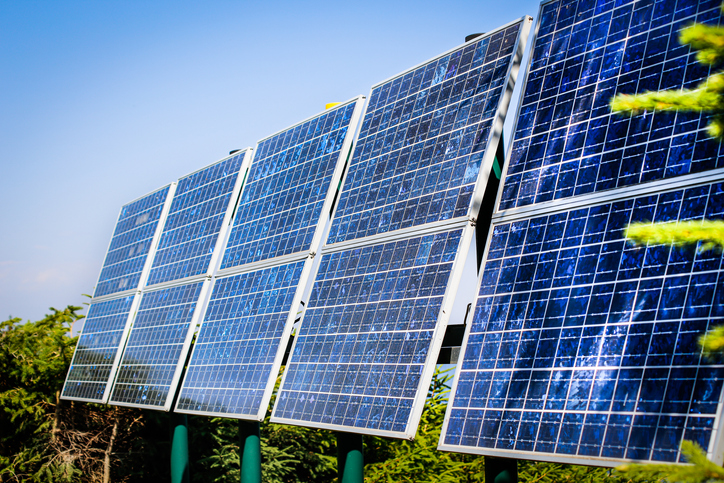America’s Green Skills Gap Raises Concerns About Energy Transition
In 2022, U.S. green job postings on LinkedIn jumped 20%, but green talent grew only 8.4%
Green skills in the U.S. aren’t growing as fast as green jobs, pressuring companies to get creative to find the workers they need to carry out the energy transition and take advantage of the historic amount of money pouring into climate technology.
Generous incentives in last year’s Inflation Reduction Act have prompted billions of dollars in clean-energy investment announcements that are forecast to create millions of U.S. jobs. But recent data shows strong growth in demand for green skills exacerbating an already tight market where demand outstrips supply.
In 2022, the number of U.S. LinkedIn profiles with at least one green skill grew around 8.4%, compared with a 20% rise in green job postings on the platform, according to data from LinkedIn provided to The Wall Street Journal. The online professional network defines green skills as those that make economic activities more environmentally sustainable, such as carbon accounting, hydrogen engineering and battery manufacturing. It considers green jobs to be ones which include climate action objectives such as removing pollution and preserving natural resources.

Likewise, more than 114,000 U.S. clean-energy jobs were created in 2022, according to last week’s annual employment report from the U.S. Department of Energy. Every state recorded an increase in these jobs and the rise outpaced employment growth in both the wider economy and the overall energy sector. More than 40% of all U.S. energy jobs last year were in clean energy, defined as ones that include technologies aligned with a net-zero future such as electric vehicles, renewables or hydrogen.
“We need this concentration of workers with green skills to be higher,” said Sue Duke, head of global public policy at LinkedIn.
The IRA earmarked around $369 billion of government incentives for energy and climate-related programs over 10 years. The legislation was predicted to create more than nine million clean-energy and climate-related jobs over the next decade, according to the Political Economy Research Institute at the University of Massachusetts Amherst.
The utility-scale clean energy industry has announced more than $150 billion of investment as well as 18,000 new manufacturing jobs associated with new or expanded facilities since the IRA was passed in August 2022, the American Clean Power Association, an industry group for wind, solar and battery storage, said in April.
“The transition to a cleaner economy, as envisioned by many policy makers, will involve building a vast amount of infrastructure,” said Kenneth Gillingham, economics professor at the Yale School of the Environment.
“There has certainly been an uptick in hiring,” Gillingham said. “But much of the building of infrastructure and clean energy is yet to come if the goals of the IRA come to pass.”
The current green skills supply shortage has raised concerns about how U.S. companies will find the workers they need as the IRA-related projects are built and eventually start operating. However, there are some mitigating factors.
“Today’s workforce is not ready for such a scaling up, but the skills needed are not always specific to green technology,” Gillingham said. There are also plenty of traditional economy roles that can quite easily transition to green jobs, such as from construction, electrical work and engineering, he said.
To help close the green skills gap, companies are getting creative. For newer, fast-growing roles such as sustainability manager and energy auditor, some businesses have recruited workers without prior green job experience, according to LinkedIn. It also said around half of the solar consultants and waste managers hired in the U.S. had no prior experience.

Businesses are also upskilling current workers and hiring people from areas of the economy that are shrinking. For example, Gillingham said coal-power plant workers are being trained to run renewable-energy farms, operate electric-vehicle charging networks or expand transmission lines.
Universities are also stepping up to help close the green skills gap. For example, the Yale School of the Environment has begun a “major push” into certification programs to train professionals with new greenskills that they can quickly bring into their companies, said Sara Smiley Smith, associate dean at the school.
Yale offers two online certification programs, each taking roughly 11 months to complete. One is on financing and deploying clean energy, while the other concerns restoring, conserving and sustainably using tropical forests. It is developing three more certifications and experimenting with the Coursera learning platform.
“The applications to the master’s program I run here have doubled in the last three years,” said Steven Cohen, director of Columbia University’s Master of Science in Sustainability Management. Cohen added: “The growth of programs to educate people to play sustainability roles in private corporations is exploding.”
The need for green skills varies across industries: The green shift in the energy and transport workforces are quite pronounced as they develop lower-carbon energy sources and electric vehicles, respectively.

More than 84% of net new electric power generation jobs last year were in clean energy such as renewables, geothermal and nuclear, although oil and gas jobs grew too, with only coal jobs falling, according to the U.S. Department of Energy. However, LinkedIn data shows that even within the U.S. oil-and-gas industry there has been a steady increase in the share of its workforce acquiring green skills, which has risen to 22%, well above the average across U.S.industries, at around 12%.
Likewise, there were more than 200,000 jobs added last year in the clean energy vehicle sector, reflecting year-over-year growth of more than 20%, according to the U.S. Department of Energy.As of 2023, nearly 11% of U.S. transport workers, such as employees of carmakers, have green skills, according to LinkedIn. The U.S.’s share of auto workers with electric vehicle-related skills rose by 68% between 2018 and 2023.
In contrast, the U.S. finance industry is lagging behind the national average despite many businesses talking up how they are increasingly basing their investments on environmental, social and governance criteria. The proportion of U.S. financial workers with green skills reached 8% in 2023, but is growing faster than most industries with a 14.8% year-over-year increase.
—Rochelle Toplensky contributed to this article.
Corrections & Amplifications
Yale School of the Environment offers two online certification programs to train professionals on new green skills, both taking roughly 11 months. A previous version of this article incorrectly said Yale’s course on financing and deploying clean energy was 10 months and a second course on restoring, conserving and sustainably using tropical forests was eight weeks. (Corrected on July 7)
 Copyright 2020, Dow Jones & Company, Inc. All Rights Reserved Worldwide. LEARN MORE
Copyright 2020, Dow Jones & Company, Inc. All Rights Reserved Worldwide. LEARN MORE
This stylish family home combines a classic palette and finishes with a flexible floorplan
Just 55 minutes from Sydney, make this your creative getaway located in the majestic Hawkesbury region.
Continued stagflation and cost of living pressures are causing couples to think twice about starting a family, new data has revealed, with long term impacts expected
Australia is in the midst of a ‘baby recession’ with preliminary estimates showing the number of births in 2023 fell by more than four percent to the lowest level since 2006, according to KPMG. The consultancy firm says this reflects the impact of cost-of-living pressures on the feasibility of younger Australians starting a family.
KPMG estimates that 289,100 babies were born in 2023. This compares to 300,684 babies in 2022 and 309,996 in 2021, according to the Australian Bureau of Statistics (ABS). KPMG urban economist Terry Rawnsley said weak economic growth often leads to a reduced number of births. In 2023, ABS data shows gross domestic product (GDP) fell to 1.5 percent. Despite the population growing by 2.5 percent in 2023, GDP on a per capita basis went into negative territory, down one percent over the 12 months.
“Birth rates provide insight into long-term population growth as well as the current confidence of Australian families,” said Mr Rawnsley. “We haven’t seen such a sharp drop in births in Australia since the period of economic stagflation in the 1970s, which coincided with the initial widespread adoption of the contraceptive pill.”
Mr Rawnsley said many Australian couples delayed starting a family while the pandemic played out in 2020. The number of births fell from 305,832 in 2019 to 294,369 in 2020. Then in 2021, strong employment and vast amounts of stimulus money, along with high household savings due to lockdowns, gave couples better financial means to have a baby. This led to a rebound in births.
However, the re-opening of the global economy in 2022 led to soaring inflation. By the start of 2023, the Australian consumer price index (CPI) had risen to its highest level since 1990 at 7.8 percent per annum. By that stage, the Reserve Bank had already commenced an aggressive rate-hiking strategy to fight inflation and had raised the cash rate every month between May and December 2022.
Five more rate hikes during 2023 put further pressure on couples with mortgages and put the brakes on family formation. “This combination of the pandemic and rapid economic changes explains the spike and subsequent sharp decline in birth rates we have observed over the past four years,” Mr Rawnsley said.
The impact of high costs of living on couples’ decision to have a baby is highlighted in births data for the capital cities. KPMG estimates there were 60,860 births in Sydney in 2023, down 8.6 percent from 2019. There were 56,270 births in Melbourne, down 7.3 percent. In Perth, there were 25,020 births, down 6 percent, while in Brisbane there were 30,250 births, down 4.3 percent. Canberra was the only capital city where there was no fall in the number of births in 2023 compared to 2019.
“CPI growth in Canberra has been slightly subdued compared to that in other major cities, and the economic outlook has remained strong,” Mr Rawnsley said. “This means families have not been hurting as much as those in other capital cities, and in turn, we’ve seen a stabilisation of births in the ACT.”
This stylish family home combines a classic palette and finishes with a flexible floorplan
Just 55 minutes from Sydney, make this your creative getaway located in the majestic Hawkesbury region.






















